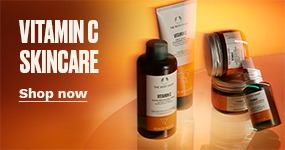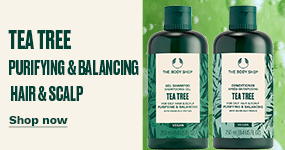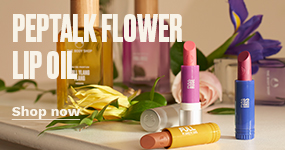WINTER HAIRCARE
Ever considered what your hair goes through every winter? Contending with cold weather and indoor heating is a bit of a rollercoaster ride for your locks. Plus, your hands might get mittens, but your mane gets a grease or static-inducing hat. All this can create dry hair, a dried-out scalp, breakages, split ends and frizz. How to chop the chances of hapless winter hair? Just like you treat your digits to our hand cream, your haircare during winter should be tailored for the season. Help keep it looking luscious and healthy with our barnet-boosting tips.
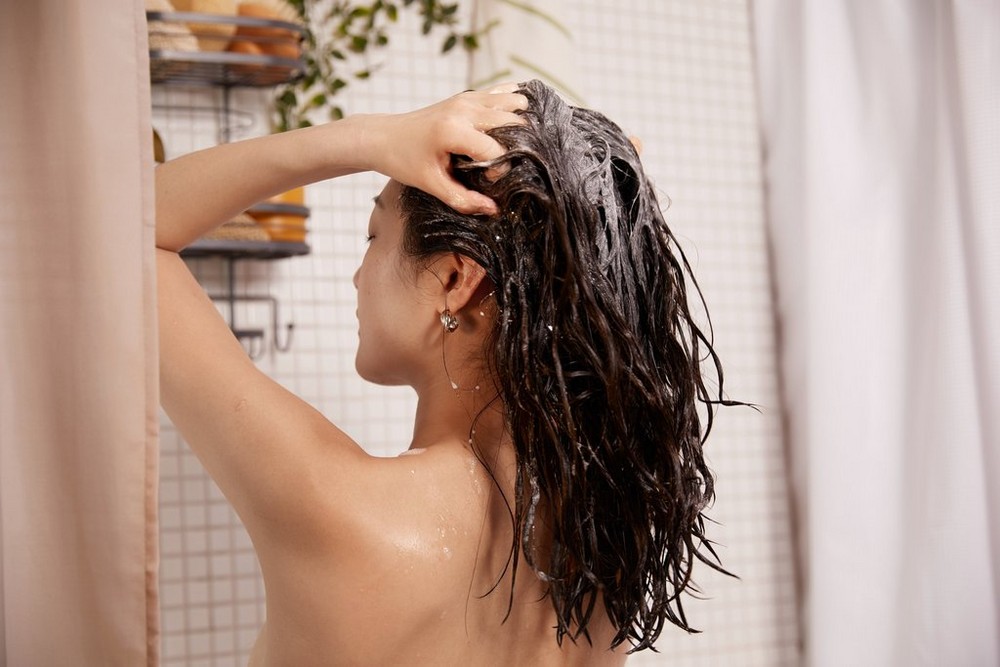
WHY SHOULD YOU CHANGE YOUR HAIRCARE ROUTINE IN WINTER?
When it’s colder, rainy, windy or snowing, your hair’s ability to hold on to moisture goes down with the thermometer gauge. That’s why you might find that your hair’s condition is drier than usual. In fact, conditions inside rattle its cage too, where artificial heaters and radiators continue to strip the hair of moisture. So, the two in tandem? Hello, dry hair. In fact, winter hair could show any and all of the signs from dry, brittle ends to a flaky scalp or greasiness. You might even see candy floss-style flyaways and static – particularly if you’ve got fine hair – meaning that strands separate and lift from your main mop.
We get it, these winter hair traits are not the end of the world, but equally we know you feel more confident, more you, when you’re having a good hair day. After all, your ‘do is part of what makes you you, and in many ways an extension of your fashion sense, a reflection of the music that soothes your soul and what you want the world to see in you. So it makes perfect sense that you’d want it to shine all year round, even when the sun’s not.
WINTER HAIRCARE TIPS
So, how do you keep your hair looking healthy in the winter? Adapt your hair washing and styling routines for the season, of course. We make it sound easy, right? Well – there’s no reason it can’t be with our easy-to-follow tips and routine. Think of it like this – just like you pull out your winter scarfs and boots, once the winds start whipping up the leaves it’s time to start a dedicated haircare routine for winter.
Let us show you how to help get rid of dry winter hair – we’ve got a whole roster of routine shifts and swaps you can make when the elements start to dry out your hair, from our best nature inspired shampoos and conditioners, to replenishing hair with moisture with our masks and nourishing serums, not to mention a wealth of winter haircare tips for your unruly dos. Read on and get back to enjoying the magic of winter’s wonderland.
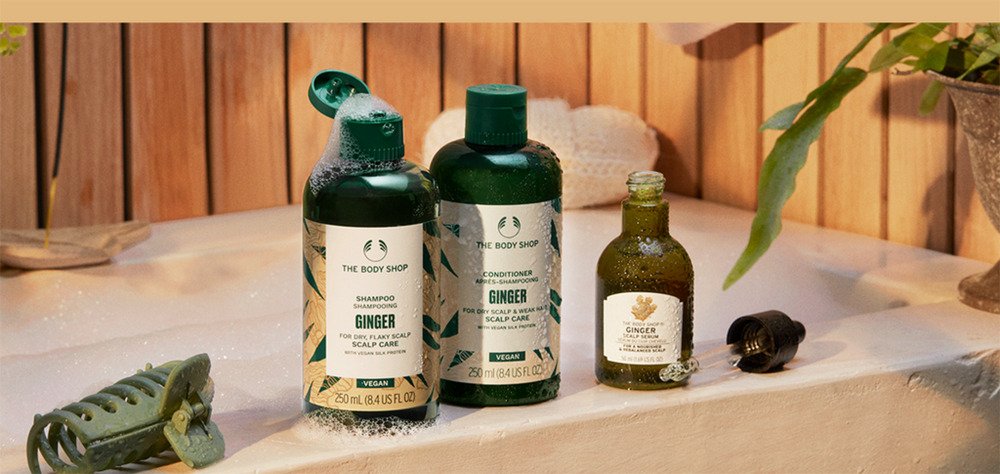
TIP 1 : LOOK AFTER YOUR SCALP
Though you might not see much of your scalp, it needs just as much care as your hair. In winter the drying duo of central heating and frosty weather can strip away moisture, creating a dry, flaky scalp. And, as you turn the taps to hot in your shower in the colder months this extra heat can over-wash hair and strip it of its natural oils too. As these oils are what ordinarily keep your hair protected and looking healthy, taking care of them is even more crucial for your winter coiffure.
Enter our bestselling Ginger haircare routine. It flies off our shelves because it works – the terrific trio helps your dry, flaky scalp feel soothed and shakes those flakes. It’s also now vegan, made with (at least!) 90% ingredients of natural origin and Vegan Silk Protein. All our new routines help repair hair from the inside out.*
Start the routine with our Ginger Anti-Dandruff Shampoo, it helps clear flakes and leaves dry, itchy scalps feeling soothed and rebalanced. Next, slather on our Ginger Scalp Care Conditioner, which helps soothe dry scalps and leaves weak hair feeling stronger, outrageously soft and more resilient. This zingy combo is formulated to keep your hair looking its healthiest, and your scalp looking cool, calm and collected.*
Finish the routine and help fend off flakes between washes with our Ginger Scalp Serum – a few drops is all it takes to nourish and soothe your scalp from dryness.*

TIP 2 : TAKE A BREAK FROM YOUR HEATED STYLING APPLIANCES
Heated curlers, straighteners and hairdryers are all culprits in creating or worsening dry hair in winter. Since their temperatures get hot-hot-hot they play havoc with hair’s moisture levels. Inside the hair shaft (the hair seen just above the scalp) water is part of the support system around keratin, a protein and the main part of your hair’s structure. When we apply thermal stress to our hair, the water molecules in each strand can evaporate, changing hair’s makeup. That’s what creates straw-like dryness and frizz. At its worrisome worst, this damage can lead to the cuticle AKA the protective layer on hair getting torn, leaving hair unprotected from further moisture loss and causing irreparable damage in the form of split ends and breakages, reduced elasticity and loss of shininess, curliness or your natural texture.
With all of that science in mind, you might see why already dry, weakened hair should dodge heated styling tools. So, whether you long for poker straight or springily curled hair, consider what you can do sans heat. Down tools and try twists, plaits or buns to get the desired effect. And when you’re taking that much-deserved break from heat styling, help give your hair the shine it deserves with a few spritzes of our Moringa Hair Mist, which instantly brightens up your barnet and brings dull hair back to life wherever you are. It’s a light, non-sticky mist that boosts shine and radiance.*
If and when you return to using heat styling tools, consider washing hair the night before and letting your locks air-dry so you don’t need to blow dry in addition to using your heat styling gadgets the next morning. Or, at the very least let it air-dry mostly before finishing up with your hairdryer. But why not embrace your hair au naturel for a change? Trust us, your hair will thank you.
TIP 3 : DON’T LEAVE THE HOUSE WITH WET HAIR
Your mama always told you and she, of course, was right – it’s not wise to leave the house with wet hair. When hair’s wet it’s more vulnerable and prone to break. Why’s that? The water droplets left in hair can enter the hair shaft and when the water temperature reaches freezing it can swell the shaft. This in turn means that the cuticles can move from where it should be, leaving hair exposed to the elements without its usual buffer. Wet hair plus wintry weather can also fade your hair colour faster and harden hair strands, leading to a higher likelihood of breakages and split ends.
There’s no reason why it should come to all that with your dry winter haircare. Simply make sure that you always fully dry your hair before heading out – whether naturally air-drying or blow drying. You may need to build in some extra time to make sure it’s dry before you go outside, yes, but you could also simply switch your hair washing schedule up. Wash and dry at night so you know by morning it’s ready to go. Oh, and one other thing – try to avoid brushing your hair when it’s soaking wet. Even in the comfort of your own post-shower steamy bathroom, wet hair is weaker. Take care of it by squeezing the water out of it with a towel (not rough-drying) and using a wide-tooth comb to gently brush from the ends moving upwards. Your mum would be proud.
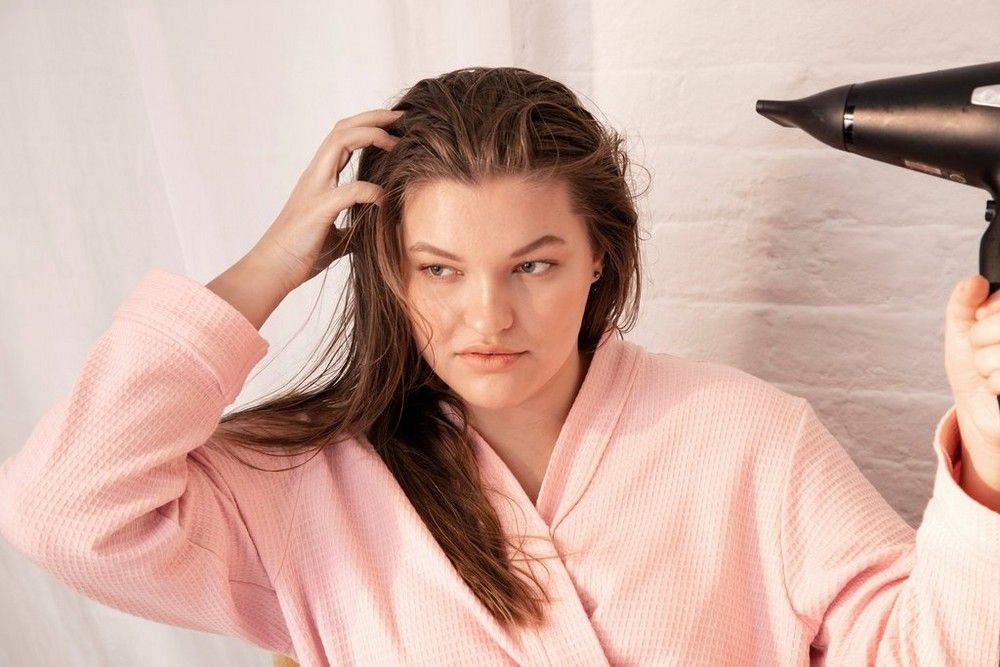
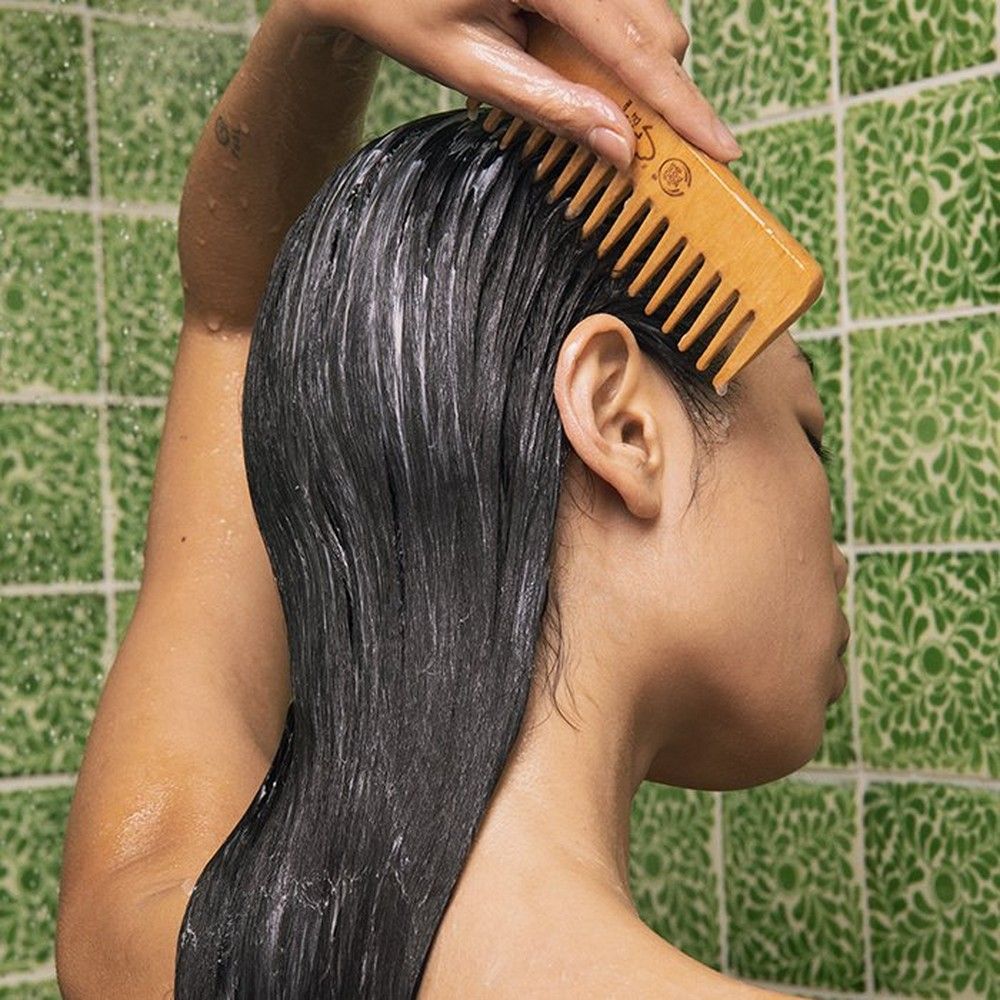
TIP 4 : TREAT YOUR HAIR TO A MASK
When it’s time to embrace all things cosy, or hygge as the Danes say, you might set up a warming log fire or ramp up the radiators. Meanwhile outside, a storm could be raging or snow could be coming down. As romantic as a blanket of untouched white snow might look from the comfort of your home, in both of these situations, inside and out, air loses its normal levels of H20 and becomes dry, and so that means drying on hair. This is when a true treat of a hair routine comes into play – using a weekly hair mask (not unlike how you treat your face to a weekly face mask) will help to keep your hair feeling and looking so lustrous you won’t be able to help but run your fingers through it. Regardless of what condition your hair is in, or your natural hair texture, this applies. We’re all in need of a moisture boost to help combat winter hair, and if you’re not looking after damaged hair, you should help take preventive measures.
If you have normal to dry hair, try out our Banana Truly Nourishing Hair Mask, enriched with organic banana puree from Ecuador and Community Fair Trade Brazil nut oil from Peru. Massage it into damp, clean hair (so, post-shampoo and conditioner), gently comb your wet hair with our Detangling Comb and leave for 10 minutes. After using this tropical-smelling treat, hair feels instantly and truly nourished from root to tip, not to mention softer to the touch, with frizz looking tamed. On the other hand, for targeted curly hair winter care, pick up our Shea Butter Richly Replenishing Hair Mask. It’s particularly pleasing for dry and damage-prone hair. Rinse thoroughly and see how it helps to detangle and condition hair without weighing it down or stripping moisture. Your hair will look less frizzy and dry – result!
TIP 5 : DON’T SHOWER TOO HOT OR TOO COLD
Your bathroom is your sanctuary, particularly when you’re in the mood for a restorative bath and a book in the cooler months. There’s nothing more relaxing to help get you in the mood for sleep or take care of tired limbs. But the conditions that you wash in might be contributing to your winter hair.
In short, take our advice – step back from that hot tap. Though it might be tempting to dial up the temperature when it’s a bit nippy out there, extreme water temperatures aren’t going to do your hair any favours. Extra hot water temperatures can strip those all-important natural oils from your scalp and create sensitivity on your dome. And when we say extreme temperatures, that means extra cold water, too – take note in case you’re a fan of a refreshing blast from the cold tap in the mornings. So when washing your hair in winter, make sure that, like Goldilocks, you get it just right. Your water temperature should be lukewarm and comfortable, helping your dry hair to remain its luscious-looking, swish-ready best in the winter months.
You might also consider cutting back on the number of hair washes you’re getting in any one week, scaling back to help limit your hair and scalp’s chances of getting vexed by differing temperatures. If you normally leave a day between hair washes, try extending it to every other day and so on.
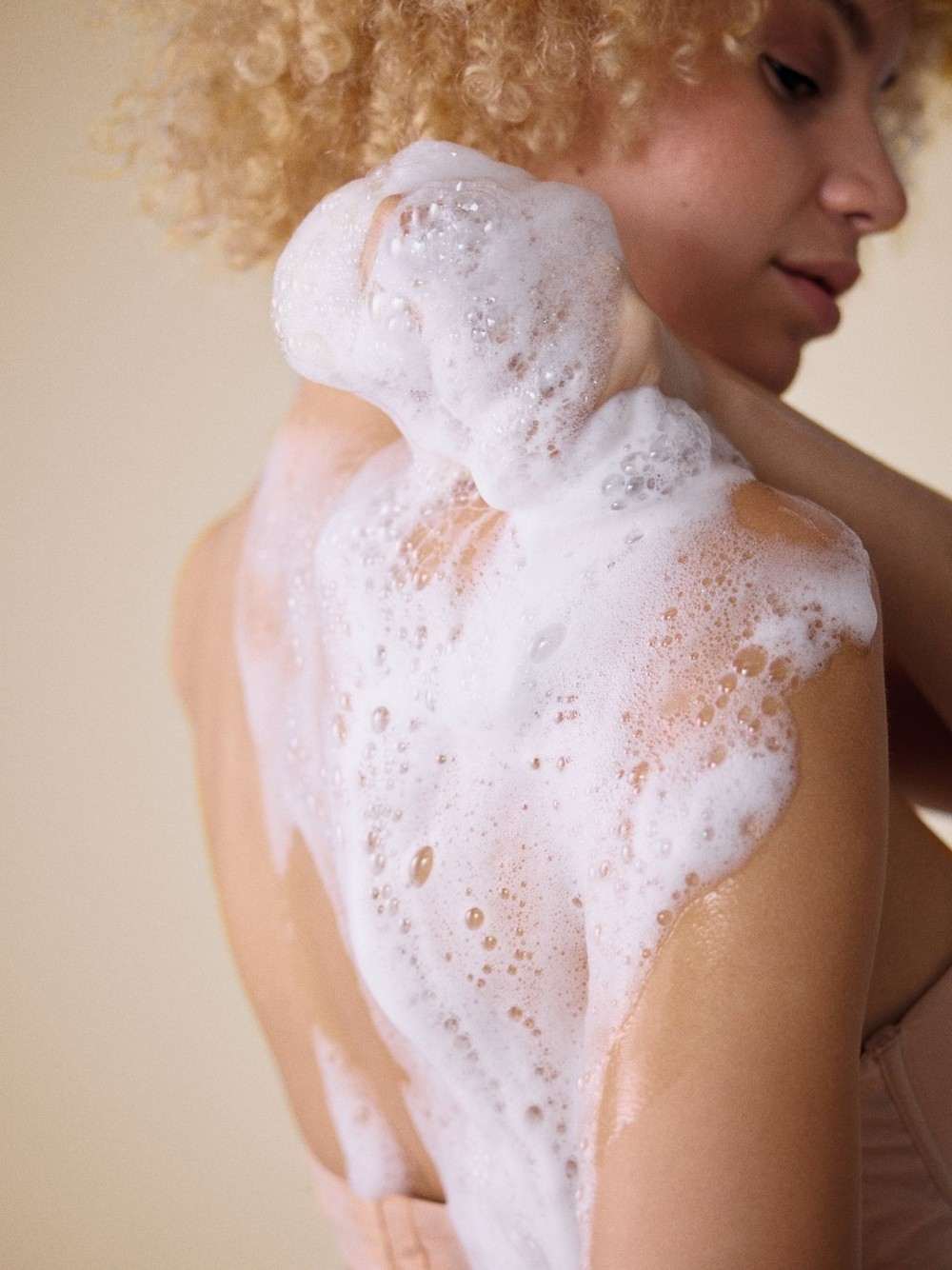
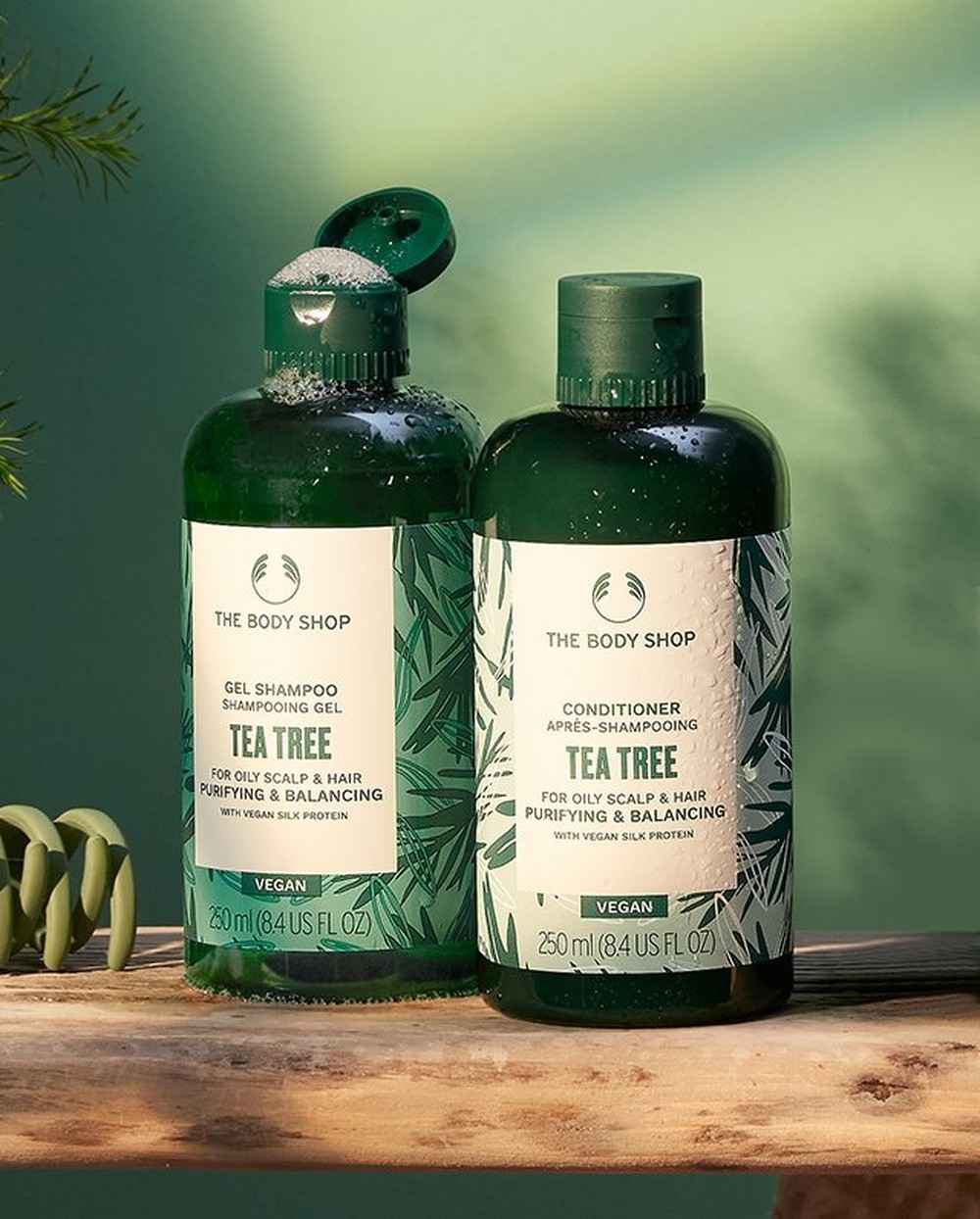
TIP 6 : TAKE A BREAK FROM HATS SO NOW AND THEN
While you might be a fan of wearing a woolly hat, your hair might not be. Under the hat your head warms up, making your natural waxy oils become more fluid, and so creating greasy-looking hair.
Also, some fabrics can create static winter hair, where you see strands lifting from the head as if you’re unwittingly taking part in a science experiment. This is down to two differing textures being in close contact, causing electrons to transfer from one to the other, creating that dreaded hat hair. When your hair’s lacking moisture, like in wintry conditions, the odds are it’ll create friction between the strands, increasing the transfer of electrons and making your hair strands repel each other.
To help prevent this make sure your hair is hydrated. Case in point for our weekly hair mask and nourishing oils, then. Meanwhile, to help purify and balance your hair and scalp, look to our Tea Tree routine. It’s perfect for people with oily locks and scalps, as it gives you fresh and clean locks. Enriched with organically-grown Community Fair Trade tea tree oil from Kenya and Vegan Silk Protein, this routine leaves hair feeling purified and refreshed without stripping its natural moisture.
Begin with our Tea Tree Shampoo, which leaves oily hair and scalps feeling cleansed and purified. Follow with our refreshingly light Tea Tree Conditioner, which leaves hair feeling softer and restored with moisture. Our new routines all help repair hair from the inside out.*
Shop haircare
*Achieved using full regime of shampoo, conditioner and mask. Visibly repairs hair. Banana hair mask, Shea hair mask and Tea Tree scrub coming soon. Stay tuned for availability.
**Achieved using full regime of shampoo, conditioner and hair mist. Visibly repairs hair.





